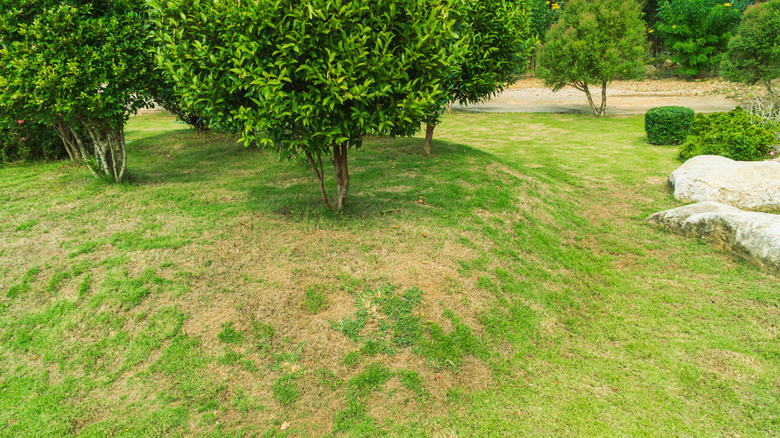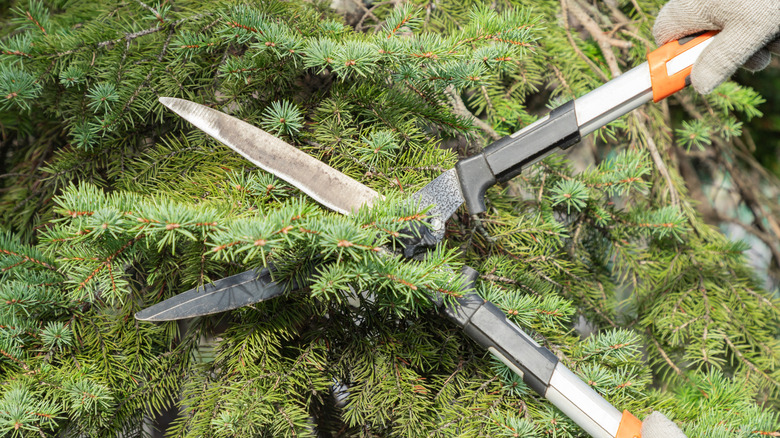The Best Way To Help Your Lawn's Bare Patches Before Winter Rolls In
Struggling with a patchy lawn? If you have trees in your yard, it might be the cause. Trees enhance the beauty of a backyard and provide much needed shade on hot days. However, the shade they create can also cause bare spots on your lawn, due to insufficient sunlight reaching the lawn. A top tip for growing lush green grass on the shady areas of your lawn is trimming dense tree canopies or overhanging branches to let in more sunlight. Do it anytime before the first hard frost to fill in bare spots and protect your lawn against winter damage.
All species and types of grass, like almost all plants, require sufficient sunlight for photosynthesis. This creates the carbohydrates the grass needs to survive the cold of winter, protecting it from challenges like ice damage and snow mold. Ice damage happens when ice covers the bare patches of your lawn and low-lying areas. As the ice builds up, it restricts access to oxygen, killing your grass. Snow mold is a fungal disease that spreads when snow covers the ground for a long time. The trapped moisture enables mold growth. Falling sunlight hours (and temperatures) also trigger winter dormancy in warm-season turfgrass, when the blades turn brown. If your lawn is bare where grass is growing under your trees, one quick solution to all these problems is removing the lower limbs.
Maximize sunlight for your lawn with tree pruning
Start by removing any debris, such fallen leaves or piles of grass clippings, from the bare patch on your lawn. You should also remove any shade-creating objects from your backyard, such as lawn furniture, children's outdoor play equipment, and large planters. This gets rid of anything other than trees that may be blocking the light from the grass. Next, trim the lower branches on your tree, known as crown raising, to bring in more light. Use shears on small branches and a saw on large branches. You can also try crown thinning, which involves pruning out some of the smaller branches within the tree's canopy. The technique also improves air circulation.
Don't make this major mistake when pruning the trees in your yard: over pruning. Taking off too many lower limbs or more than 25% of a tree's canopy each season can stress the plant, potentially leading to interior trunk decay. Similarly, don't trim your trees too late in the fall, and keep your shears away from struggling trees. Any new growth will be susceptible to damage from frost and snow as winter approaches. If you are unsure about the best timing and techniques for pruning the specific tree species in your yard, get advice from a certified arborist. This is the best way to ensure the health of trees — and, subsequently, grow a lush, patch-free lawn.

